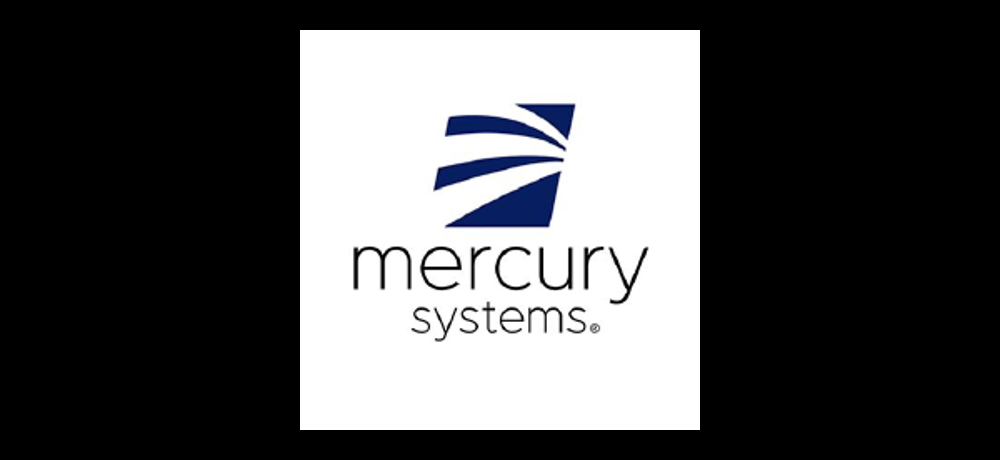Mercury Systems acquires Star Lab to enhance secure processing capabilities for aerospace and defense applications.
Quiver AI Summary
Mercury Systems, Inc. has announced the acquisition of Star Lab, a subsidiary of Wind River Systems, to enhance its secure processing capabilities for aerospace and defense applications. Star Lab specializes in anti-tamper and cybersecurity software that protects mission-critical processors from sophisticated attacks. Mercury's partnership with Star Lab has spanned over a decade, utilizing its technology in various products that secure sensitive data against threats. This acquisition will improve Mercury's offerings, including rugged servers and integrated processing solutions, and is part of the company's strategy to provide comprehensive security solutions to its customers. Mercury continues to position itself as a leader in secure processing technologies, aiming to meet the growing demand for holistic security in government missions.
Potential Positives
- The acquisition of Star Lab enhances Mercury's leadership position in secure processing capabilities for aerospace and defense applications, providing advanced anti-tamper and cybersecurity software solutions.
- This integration of Star Lab's technology into Mercury's products enables unique and valuable cybersecurity protections, addressing critical needs in defense applications.
- The acquisition will allow Mercury to offer an expanded portfolio of fully integrated security solutions, responding to the increasing demand for holistic security in government missions.
- With over 300 deployed programs globally, Mercury's strengthened capabilities can enhance its competitive edge and support its growth in the aerospace and defense sectors.
Potential Negatives
- The press release acknowledges several significant risks and uncertainties, such as reliance on continued funding of defense programs and potential impacts from geopolitical unrest, which may cause concerns about the company's future performance.
- The mention of litigation involving the former CEO indicates potential internal governance issues that could affect investor confidence.
- The warning about the complexities and challenges in integrating acquired businesses, like Star Lab, raises concerns regarding the potential difficulties in achieving anticipated synergies and benefits from the acquisition.
FAQ
What is the significance of Mercury's acquisition of Star Lab?
The acquisition enhances Mercury's secure processing capabilities for aerospace and defense, particularly in anti-tamper and cybersecurity software solutions.
How does Star Lab's technology integrate with Mercury products?
Star Lab's software easily integrates with Mercury products, providing unique cybersecurity protection for a wide range of applications.
What products will benefit from this acquisition?
The acquisition will enhance various Mercury products, including rugged servers, embedded processing cards, avionics, and integrated processing solutions.
Who is the spokesperson for this announcement?
Tom Smelker, Mercury’s Senior Vice President of Processing Technologies, commented on the acquisition's importance for enhancing security solutions.
Where is Mercury Systems headquartered?
Mercury Systems is headquartered in Andover, Massachusetts, with 23 locations worldwide serving multiple defense applications.
Disclaimer: This is an AI-generated summary of a press release distributed by GlobeNewswire. The model used to summarize this release may make mistakes. See the full release here.
$MRCY Insider Trading Activity
$MRCY insiders have traded $MRCY stock on the open market 4 times in the past 6 months. Of those trades, 0 have been purchases and 4 have been sales.
Here’s a breakdown of recent trading of $MRCY stock by insiders over the last 6 months:
- CHARLES ROGER IV WELLS (EVP, COO) has made 0 purchases and 2 sales selling 3,869 shares for an estimated $162,579.
- STUART KUPINSKY (EVP, CLO & Corp Sec) sold 2,377 shares for an estimated $104,882
- DOUGLAS MUNRO (VP, CAO) sold 595 shares for an estimated $26,253
To track insider transactions, check out Quiver Quantitative's insider trading dashboard.
$MRCY Hedge Fund Activity
We have seen 105 institutional investors add shares of $MRCY stock to their portfolio, and 117 decrease their positions in their most recent quarter.
Here are some of the largest recent moves:
- WILLIAM BLAIR INVESTMENT MANAGEMENT, LLC removed 866,911 shares (-11.9%) from their portfolio in Q4 2024, for an estimated $36,410,262
- T. ROWE PRICE INVESTMENT MANAGEMENT, INC. removed 805,653 shares (-100.0%) from their portfolio in Q4 2024, for an estimated $33,837,426
- WESTWOOD HOLDINGS GROUP INC removed 787,788 shares (-100.0%) from their portfolio in Q4 2024, for an estimated $33,087,096
- MILLENNIUM MANAGEMENT LLC added 677,894 shares (+196.1%) to their portfolio in Q4 2024, for an estimated $28,471,548
- SCOPIA CAPITAL MANAGEMENT LP added 648,878 shares (+95.5%) to their portfolio in Q4 2024, for an estimated $27,252,876
- FMR LLC added 552,927 shares (+18028.3%) to their portfolio in Q4 2024, for an estimated $23,222,934
- UBS GROUP AG added 498,354 shares (+1428.1%) to their portfolio in Q4 2024, for an estimated $20,930,868
To track hedge funds' stock portfolios, check out Quiver Quantitative's institutional holdings dashboard.
Full Release
ANDOVER, Mass., May 01, 2025 (GLOBE NEWSWIRE) -- Mercury Systems, Inc. (NASDAQ: MRCY, www.mrcy.com ), a technology company that delivers mission-critical processing to the edge, today announced the closure of an agreement that will further advance the company’s leadership position in secure processing capabilities for aerospace and defense applications.
Mercury has completed the acquisition of Star Lab, a subsidiary of Wind River Systems, Inc., that provides anti-tamper and cybersecurity software solutions designed to protect mission-critical processors from advanced attacks. Mercury has worked with Star Lab for more than a decade, leveraging its technology in deployed and awarded Common Processing Architecture and BuiltSECURE™ products, which mitigate reverse engineering and safeguard confidential data from adversarial threats even when a system has been compromised. This unique technology is required across many defense applications in order to deter, impede, detect, and respond to the exploitation of critical program information.
Star Lab software is readily and easily integrated with many other Mercury products to provide unique and valuable cybersecurity protection for customers. The acquisition will enhance a wide range of Mercury products and solutions, such as rugged servers, embedded processing cards, mixed signal cards, avionics, and integrated processing solutions. Star Lab will join Mercury’s Processing Technologies business unit.
“Mercury is a leader in secure processing technologies for aerospace and defense platforms, with unique expertise and IP related to advanced cryptography, secure boot, and physical protection technologies,” said Tom Smelker, Mercury’s Senior Vice President of Processing Technologies. “As holistic security becomes increasingly essential for government missions, the acquisition of Star Lab will allow Mercury to deliver an expanded portfolio of fully integrated security solutions to our customers and partners.”
Mercury Systems – Innovation that matters®
Mercury Systems is a technology company that delivers mission-critical processing power to the edge, making advanced technologies profoundly more accessible for today’s most challenging aerospace and defense missions. The Mercury Processing Platform allows customers to tap into innovative capabilities from silicon to system scale, turning data into decisions on timelines that matter. Mercury’s products and solutions are deployed in more than 300 programs and across 35 countries, enabling a broad range of applications in mission computing, sensor processing, command and control, and communications. Mercury is headquartered in Andover, Massachusetts, and has 23 locations worldwide. To learn more, visit mrcy.com. (Nasdaq: MRCY)
Forward-Looking Safe Harbor Statement
This press release contains certain forward-looking statements, as that term is defined in the Private Securities Litigation Reform Act of 1995, including those relating to the Company's focus on enhanced execution of the Company's strategic plan. You can identify these statements by the words “may,” “will,” “could,” “should,” “would,” “plans,” “expects,” “anticipates,” “continue,” “estimate,” “project,” “intend,” “likely,” “forecast,” “probable,” “potential,” and similar expressions. These forward-looking statements involve risks and uncertainties that could cause actual results to differ materially from those projected or anticipated. Such risks and uncertainties include, but are not limited to, continued funding of defense programs, the timing and amounts of such funding, general economic and business conditions, including unforeseen weakness in the Company’s markets, effects of any U.S. federal government shutdown or extended continuing resolution, effects of geopolitical unrest and regional conflicts, competition, changes in technology and methods of marketing, delays in or cost increases related to completing development, engineering and manufacturing programs, changes in customer order patterns, changes in product mix, continued success in technological advances and delivering technological innovations, changes in, or in the U.S. government’s interpretation of, federal export control or procurement rules and regulations, including tariffs, changes in, or in the interpretation or enforcement of, environmental rules and regulations, market acceptance of the Company's products, shortages in or delays in receiving components, supply chain delays or volatility for critical components, production delays or unanticipated expenses including due to quality issues or manufacturing execution issues, adherence to required manufacturing standards, capacity underutilization, increases in scrap or inventory write-offs, failure to achieve or maintain manufacturing quality certifications, such as AS9100, the impact of supply chain disruption, inflation and labor shortages, among other things, on program execution and the resulting effect on customer satisfaction, inability to fully realize the expected benefits from acquisitions, restructurings, and operational efficiency initiatives or delays in realizing such benefits, challenges in integrating acquired businesses and achieving anticipated synergies, effects of shareholder activism, increases in interest rates, changes to industrial security and cyber-security regulations and requirements and impacts from any cyber or insider threat events, changes in tax rates or tax regulations, such as the deductibility of internal research and development, changes to interest rate swaps or other cash flow hedging arrangements, changes to generally accepted accounting principles, difficulties in retaining key employees and customers, litigation, including the dispute arising with the former CEO over his resignation, unanticipated costs under fixed-price service and system integration engagements, and various other factors beyond our control. These risks and uncertainties also include such additional risk factors as are discussed in the Company's filings with the U.S. Securities and Exchange Commission, including its Annual Report on Form 10-K for the fiscal year ended June 28, 2024 and subsequent Quarterly Reports on Form 10-Q and Current Reports on Form 8-K. The Company cautions readers not to place undue reliance upon any such forward-looking statements, which speak only as of the date made. The Company undertakes no obligation to update any forward-looking statement to reflect events or circumstances after the date on which such statement is made.
INVESTOR CONTACT
Tyler Hojo
Vice President, Investor Relations
[email protected]
MEDIA CONTACT
Turner Brinton
Senior Director, Corporate Communications
[email protected]





